One of the quickest ways to create an eyesore in your yard is to cut down a tree. Although no one really wants to cut down trees, sometimes it is a necessity.
What you are left with is a tree stump, which can be costly to remove. An alternative to the expense of stump removal is to build a planter. If you like this idea, check out tree stump planter ideas other people have created. Maybe you’ll find something that works in your garden.
For best results, follow the same rules for plants and shrubs that are recommended for planting in any garden. Some plants do best in full sun, while others thrive in shady areas.
Every plant still needs the right soil, root system, fertilizer and a water source.
To make a proper tree stump planter, your tree stump should be at least 16 inches tall and 10 inches wide. You need to hollow out the middle.
Depending on the type of plants you plan to use, drilling drainage holes may be necessary.

Add colorful plants like Flirt Nandina, Red Twig Dogwood or Coleus in the center.
The tree trunk provides moisture and nutrients as it decomposes.
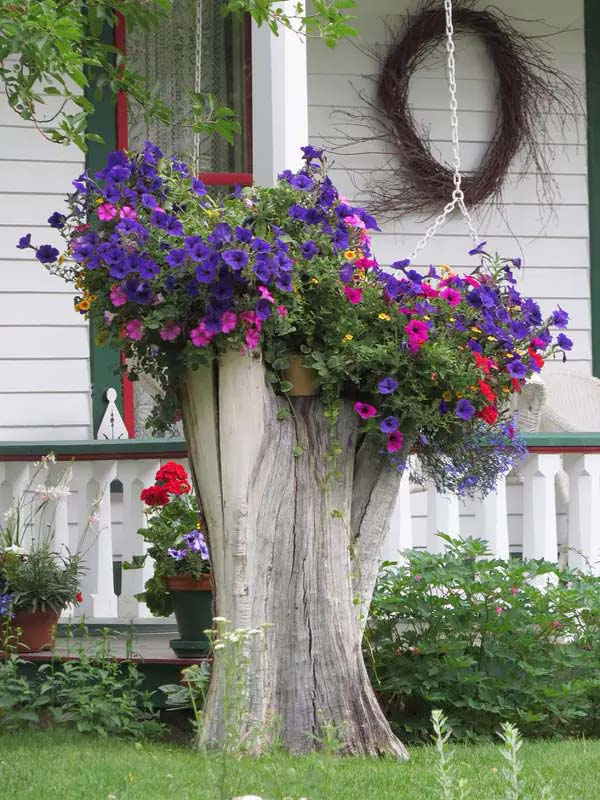
Petunias work well in hanging baskets. The homeowner created a lush hanging garden by attaching a planter of petunias to a large tree stump and placing a hanging basket on each side.
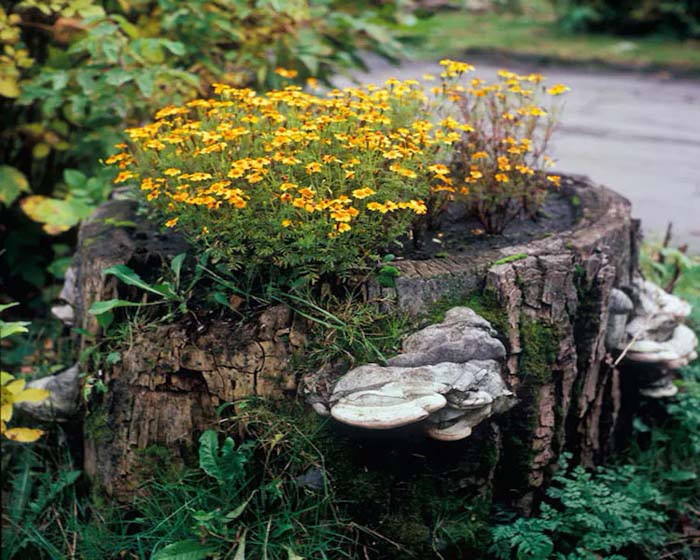
If you like marigolds but live in a warmer climate, try Mexican marigolds.
This small shrub thrives in warm regions. Another similar option is common chinchweed. Both plants are used in the kitchen.
The mushrooms add character.
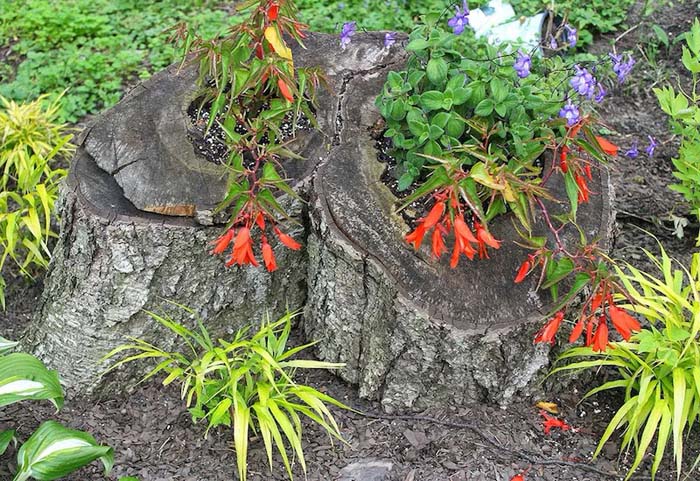
Flowers that grow well in hanging baskets usually also thrive in tree stumps. A trailing plant like Begonia Firewings will fill up and provide tons of color.
They are a vigorous plant with branches reaching 15 to 20 inches long.
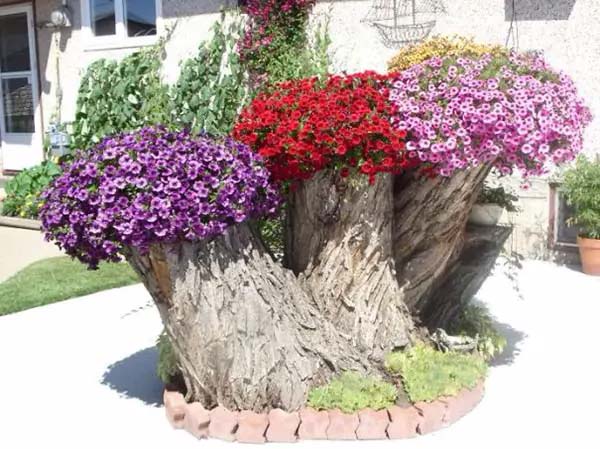
A circle of bricks surrounds an area where a large tree with several stumps once stood.
Each stump was treated as a separate planter for petunias of different colors.
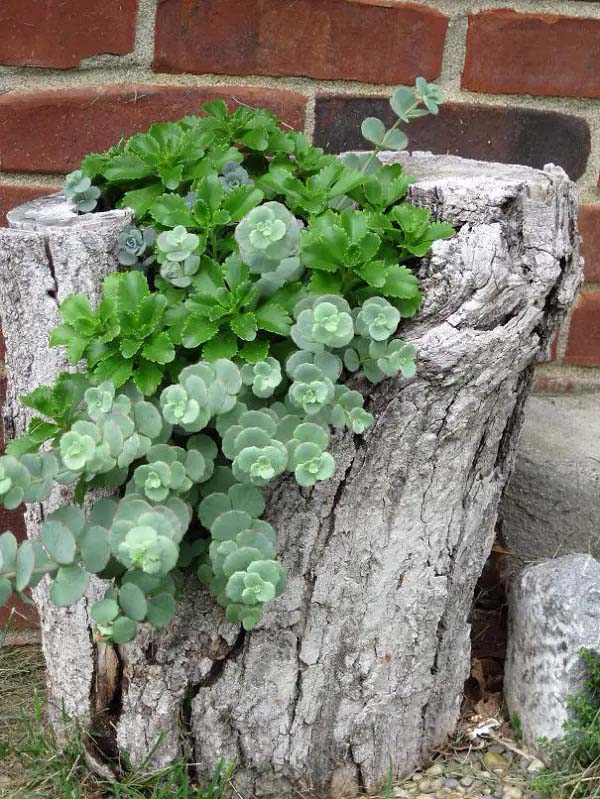
Succulents thrive in loose soil and do well on an old tree stump. This tree stump looks like it has been removed from its original location.
Plant low-growing succulents like the flowering October silk sedum.
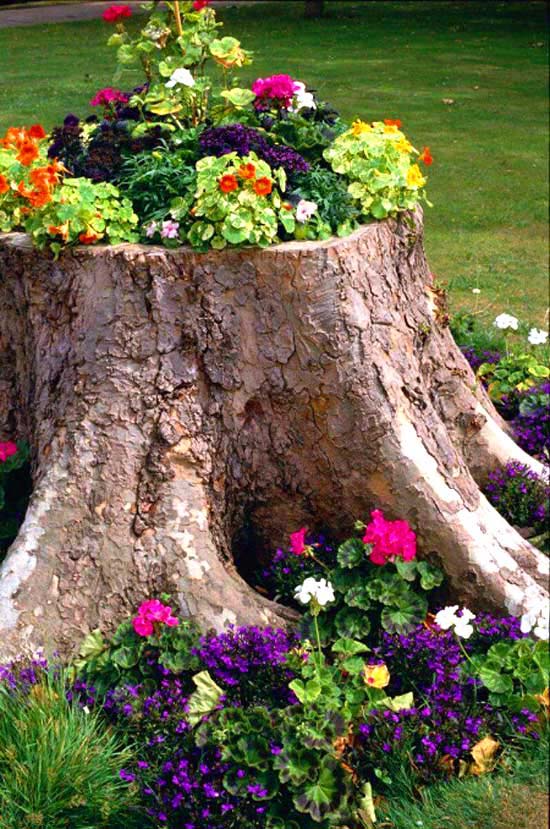
Add flowers like begonias, nasturtiums, and violets around the base.
A beautiful transition is created between the lawn and the tree stump.
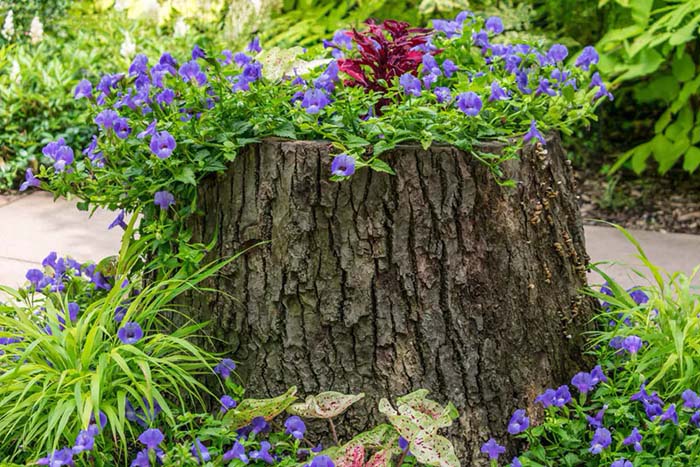
If you want to fill your tree stump with purple blooms, try Calibrachoa Superbells Lavender or Summer Wave Blue Torenia.
Dwarf caladium bulbs planted on the ground also thrive here.
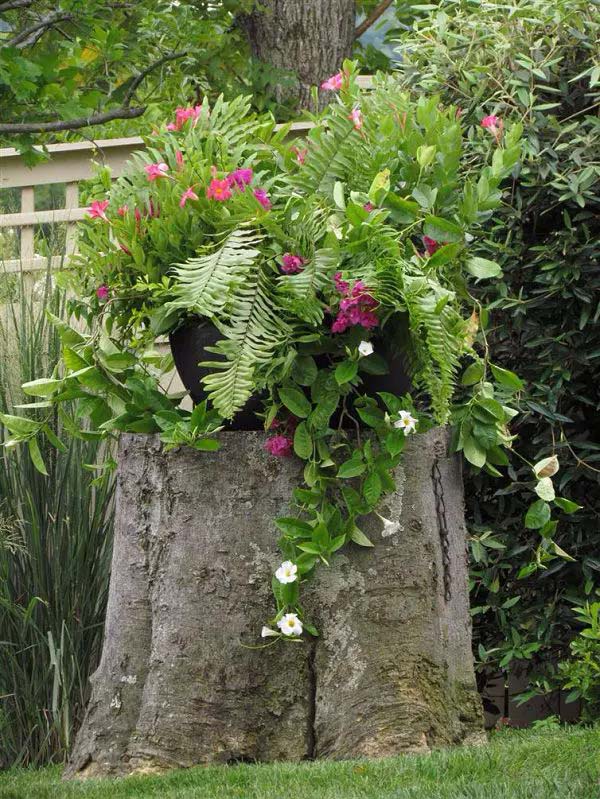
If you live in an area with high annual rainfall, create a miniature bog garden with ferns and trailing perennials such as Swingtime Fuchsia and Lobelia.
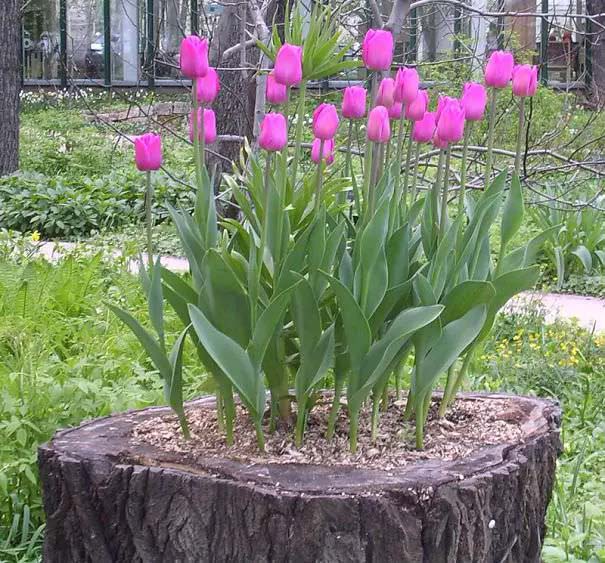
Plant tulips in your tree stump and you will be greeted by a bouquet of flowers every morning.
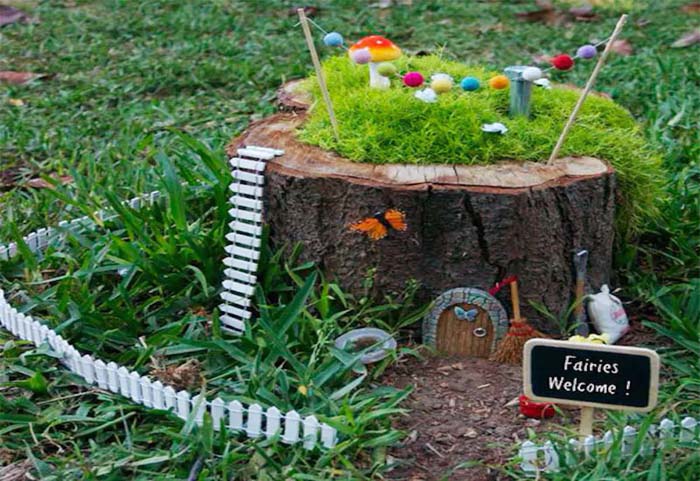
You don’t have to carve a house into your small tree stump. Use miniatures from a hobby store to create your dream land.
Expand a wonderland around the tree stump with a picket fence. This prevents your lawn mower blade from touching exposed roots.
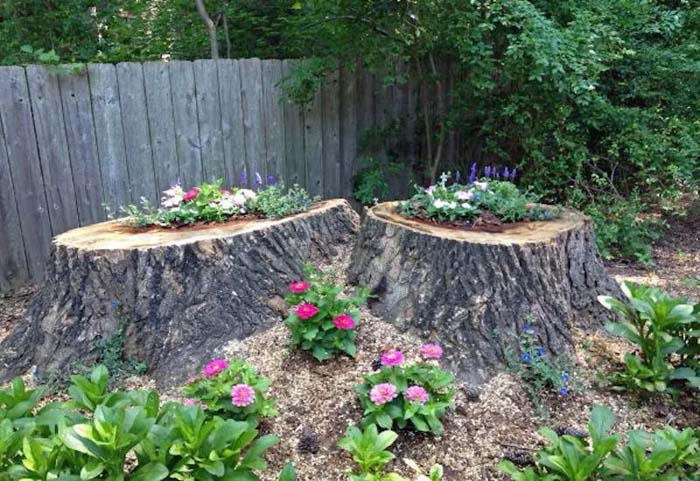
Two trees that grew too close together became a tree garden.
Experiment with different plants and colors. The decomposition of these roots enriches the soil with nutrients.
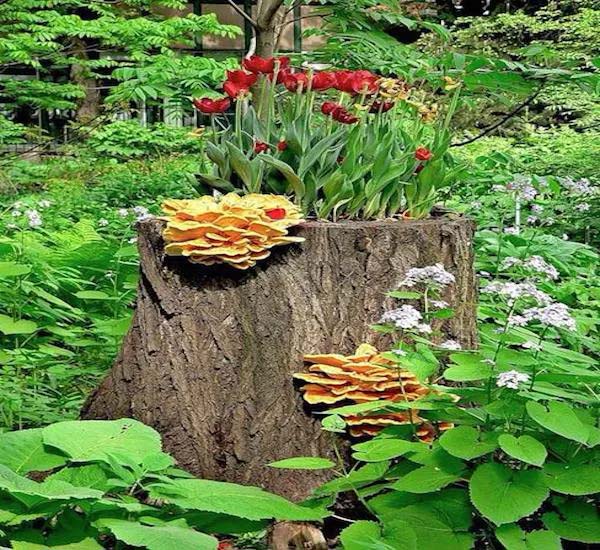
An oak tree stump is a perfect starting point for cultivating Chicken of the Woods mushrooms.
The top can still be used as a planter for your favorite flowers, like these tulips.

The advantage of using logs is that you can move them around like regular planters, adding color and plants anywhere in your garden. When using logs, remove the outer bark. It’s loose and most of it can be solved without much effort.
Both stumps and logs can be used to plant everything from succulents like Tricolor Jade to ground covers like hosta.

The beauty of using a stump is that it never looks broken. Plus, you can add beautiful colors the same year you cut the tree down.
A group of Easy Wave Burgundy Star petunias planted in a tree stump stands proudly in the center of a flower bed.

Coppertips or Crocosmia can be grown in tree stumps. They thrive in full or partial sun. Choose a red variety like Lucifer or Fire King.
Their red flowers make them a magnet for pollinators such as hummingbirds and butterflies.
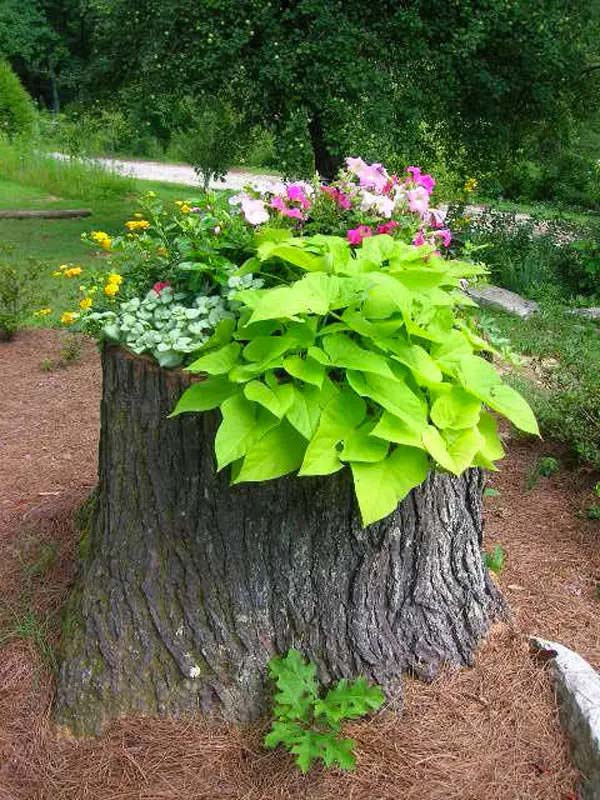
Marguerite ornamental sweet potato vine brings lots of greenery back to an oak stump.
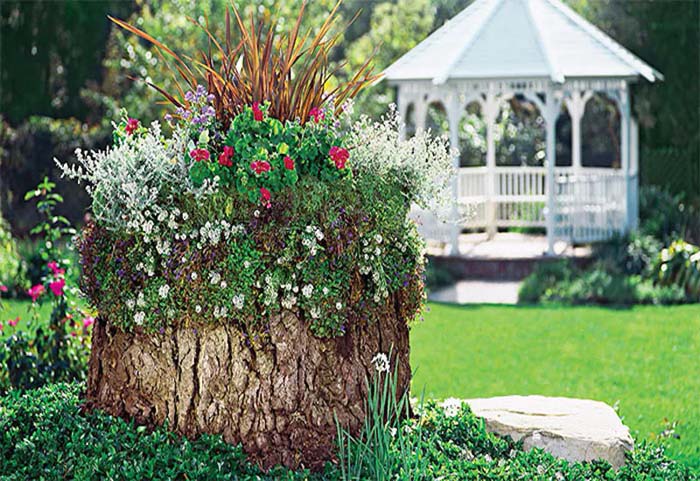
Over time, a tree stump used as a planter will become an eye-catcher in your garden.
Ornamental grass looks like a crown on a stump that has been cultivated for several years.
via Lowe’s
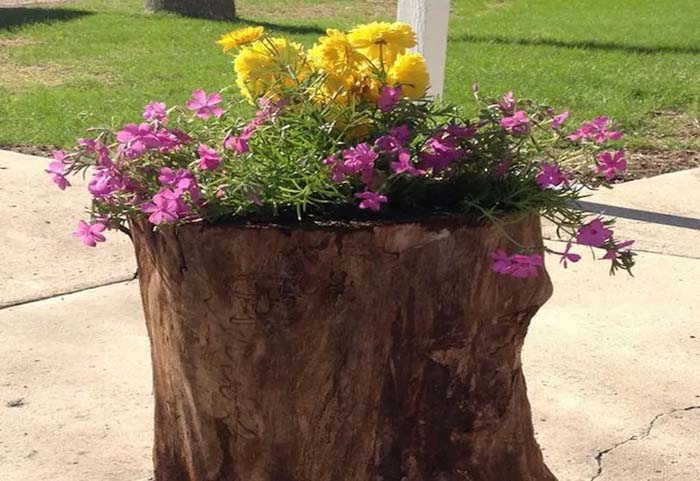
This stump has been stripped of its outer bark. It’s ready to go anywhere.
Purple phlox looks great when combined with a yellow flower like dahlias or pleniflora.
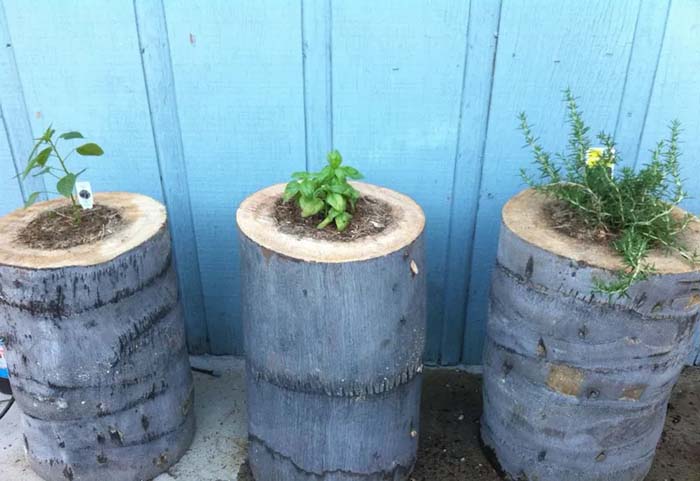
A felled tree was divided into three trunks, drilled out and used as planters.
You can plant all sorts of things in tree trunks like the ones shown here, with peppers and herbs like basil and rosemary.
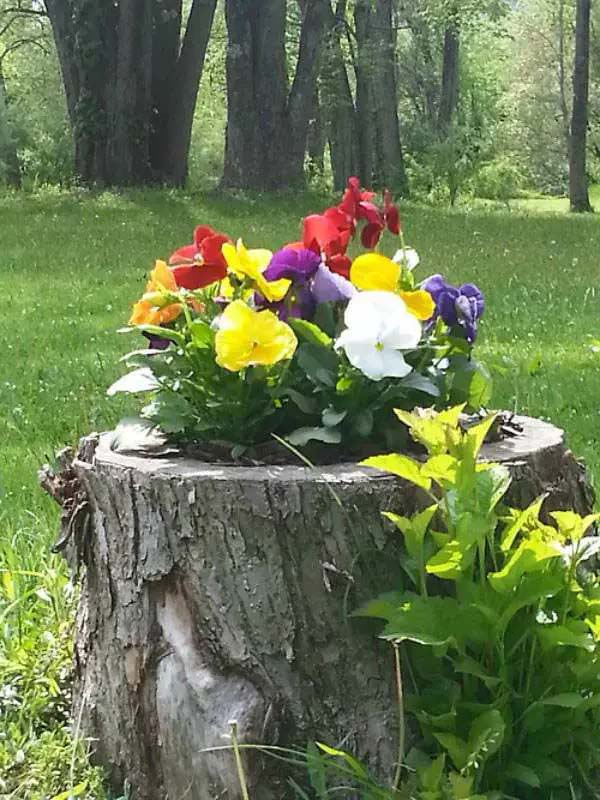
A collection of pansies form a rainbow of beauty in a large tree stump.
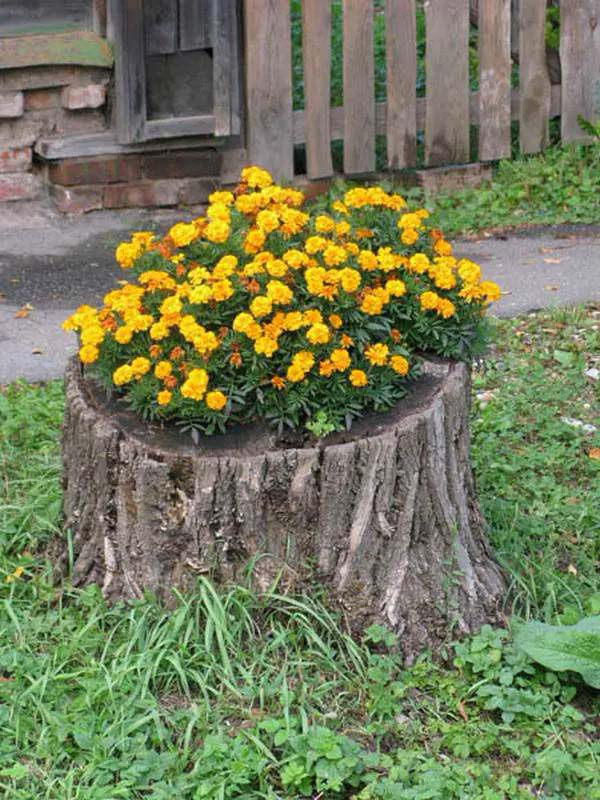
Marigolds add some much-needed color to this gray tree stump. Choose a flower that can tolerate a little crowding.
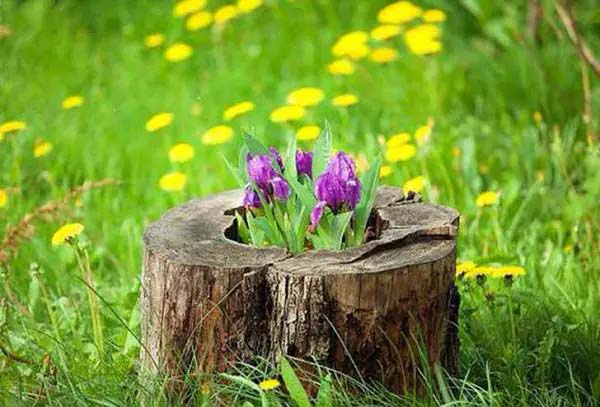
Tulips are ideal for pots and containers. Just a few tulips planted in this small tree stump add delicate beauty to this garden.
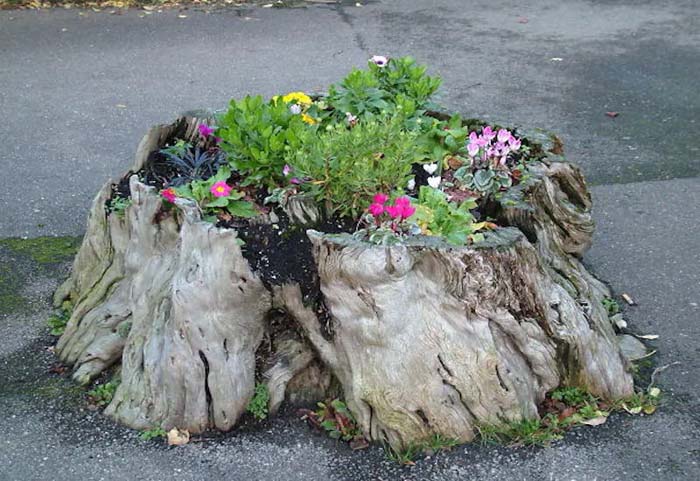
Tiny flowers and leaves add a little fun to this petrified tree stump nestled into a walkway.
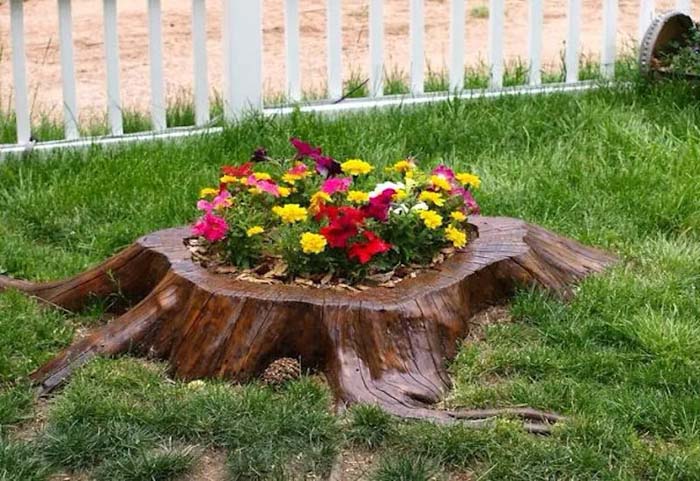
The outer bark of a tree breaks off easily after it is felled. Decomposition begins immediately.
Applying two to three coats of polyurethane will protect this stump and make it a permanent part of the lawn.

Flowering ground covers like this creeping thyme can thrive in a tree stump.
They follow their natural tendency to expand, creating a waterfall of colors.
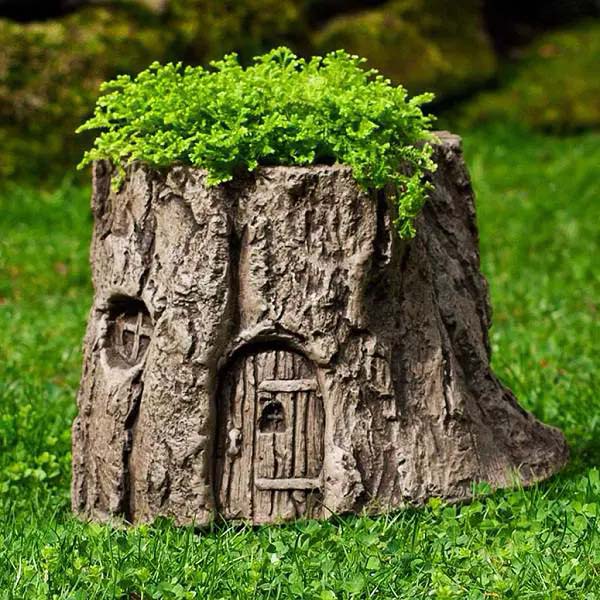
People are getting very creative by building little trolls and fairy houses out of tree stumps in their gardens.
It remains one of the most popular tree stump planting ideas. If you don’t have a tree stump in your yard, you can always purchase one.
This planter is made from hand-poured concrete. Cover it with a spiny moss Selaginella, a relative of the fern family.
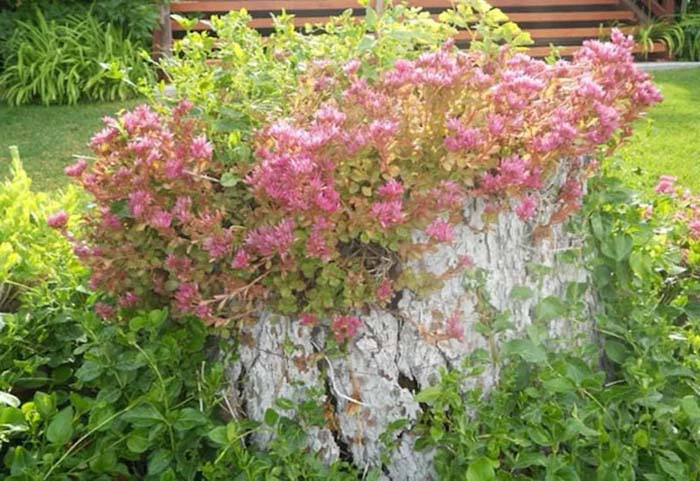
Little Quick Fire hydrangeas are running wild in and around this old tree stump.
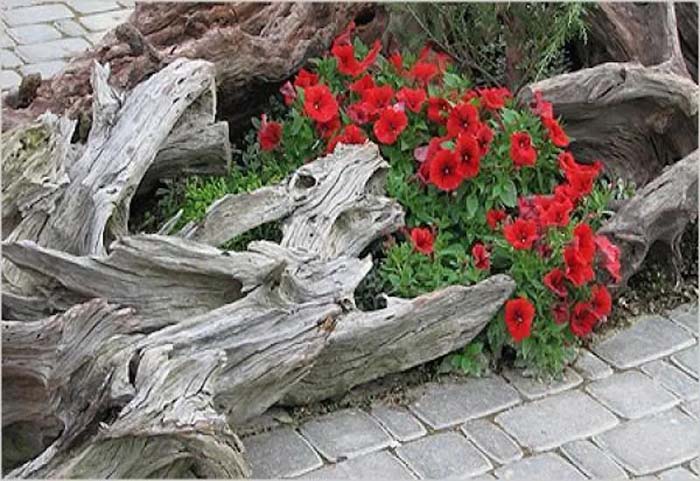
This tree stump received a beauty makeover when flowers and driftwood were added to its base. You can achieve amazing results if you combine the petrified driftwood with red flowers.
Choose a red petunia like Supertunia Black Cherry or Surfinia Red.
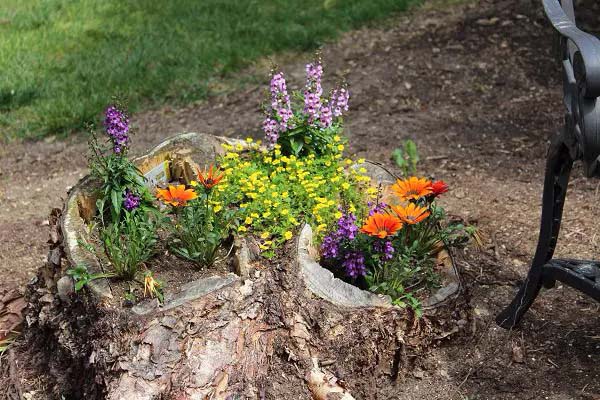
If you love wildflowers but are worried about them taking over your garden, a tree stump will contain the root system. Angelonias and Gazanias work in warm climates.





